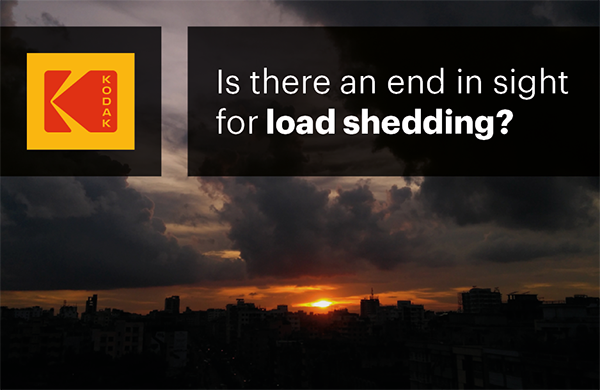South Africa experienced daily load shedding for the first time for two weeks in January 2008 as a last-resort measure to spread limited energy resources across multiple power sources.
Over 15 years later, the country is still battling the same problem — and it has only gotten worse.
In January 2023, Eskom imposed a series of blackouts between Stage 3 and Stage 6. Then, in early February, President Ramaphosa announced a national state of disaster in response to the energy crisis as South Africa approached 100 consecutive days of rolling blackouts — the longest stretch to date.
Such an unreliable power supply has caused chaos and disruption for the entire population, and homeowners and businesses are desperately seeking solutions that are unlikely to come from state-owned utilities.
Now, people are rightfully wondering what lies ahead for the load shedding crisis — and how solar could help them escape these ongoing blackouts.
The escalation of load shedding
South Africa’s current energy landscape is defined by two things: increasing demand caused by the rising population and aged, inefficient coal plants.
Both of these factors will become more problematic as time goes on. Although the government plans to recruit an electricity minister to prevent the problem from escalating, there are real concerns that load shedding could soon become more severe than it has ever been.
Having cut 7,092MW in the middle of February this year, exceeding the 7,000MW limit for Stage 7, reports are circulating that South Africa has already entered the dreaded Stage 8, whether they have admitted it or not.
If Stage 8 is formally introduced, more power will be lost for longer periods of time, and residents could be in the dark up to six times or 12 hours a day, depending on the schedule — a terrifying prospect for the country’s economy.
The energy crisis is already costing the South African economy an estimated R900 million daily. All sorts of organisations — from schools to supermarkets — are struggling to stay operational amidst the disruption, causing many consumers to stage protests and launch lawsuits against the authorities.
As the country steams through the stages of load shedding, it becomes more and more unlikely that it will find a long-term solution in coal power — which South Africa relies on to generate around 84% of its electricity, according to a 2022 study by Ember.
Fortunately, there is a light at the end of the tunnel — and it comes in the form of renewables…
The journey to green power
Renewable energy has long been presented as the answer to South Africa’s energy woes, offering a cost-effective, eco-friendly and reliable alternative to unstable grid supplies.
South Africa is especially well-positioned to benefit from solar power. Most regions enjoy plenty of sunshine all year round, with average solar radiation levels ranging between 4.5 and 6.5kWh/m2 per day. So, solar energy is the most readily accessible resource in the country; all that is missing is the equipment and infrastructure to harness it.
As a result, officials are ramping up the rollout of renewable infrastructure across the country to provide uninterrupted power where needed.
During the COP27 summit in November 2022, the South African government announced its ‘Just Energy Transition (JET) Investment Plan’. This initiative has secured international funding for accelerating renewable energy deployment between 2023 and 2027 as part of the country’s environmental commitments and efforts to meet energy demands with ‘green’ power.
The JET Investment Plan will integrate clean energy strategies into key policy areas, with ZAR 4.1 billion being invested into coal plant decommissioning and ZAR 233.2 billion into PV infrastructure.
On top of these developments, several large-scale PV projects are in the pipeline thanks to private sector investments — supported by the government’s decision to significantly increase the licensing threshold for embedded generation projects from 1MW to 100MW in August 2021.
Thanks to this new policy, a January 2023 update on South Africa’s energy action plan revealed that 9GW of unsubsidised distributed-generation solar projects spread across over 100 sites were under development nationwide.
All of this is promising for the future of PV infrastructure in the coming months and years. But what can South Africa’s citizens do to escape load shedding in the meantime?
The solar solution
For those stuck in limbo whilst waiting for the installation of private and state-backed renewable power sites, KODAK Solar Products has the solution.
KODAK Solar Products has a range of exceptional, affordable PV products that help businesses keep the doors open and the lights on in the event of grid failure — no matter where and when they operate. With one of these solar energy storage systems, business owners no longer need to worry about disappointing customers and can return to business as usual when blackouts strike.
These systems are also designed with homeowners in mind. Enabling quick installation for a reliable backup energy supply, users can trust KODAK Solar Products to power essential functions like lighting, hot water and air conditions during load shedding — removing the stress and uncertainty of lacking a dependable electricity source.
KODAK Solar Products inverters are renowned for their reliability for both on and off-grid usage (even in remote locations), and its selection of batteries offers outstanding efficiency to maximise energy storage.
These innovative solutions are available in three convenient, cost-effective packages — Entry Level, High Power and Max Power — that can cater to different installation requirements and make it easier than ever for anyone to start their solar journey.
Ready to take control of your energy supply? Find a solar installer near you and begin your solar power transition today.




